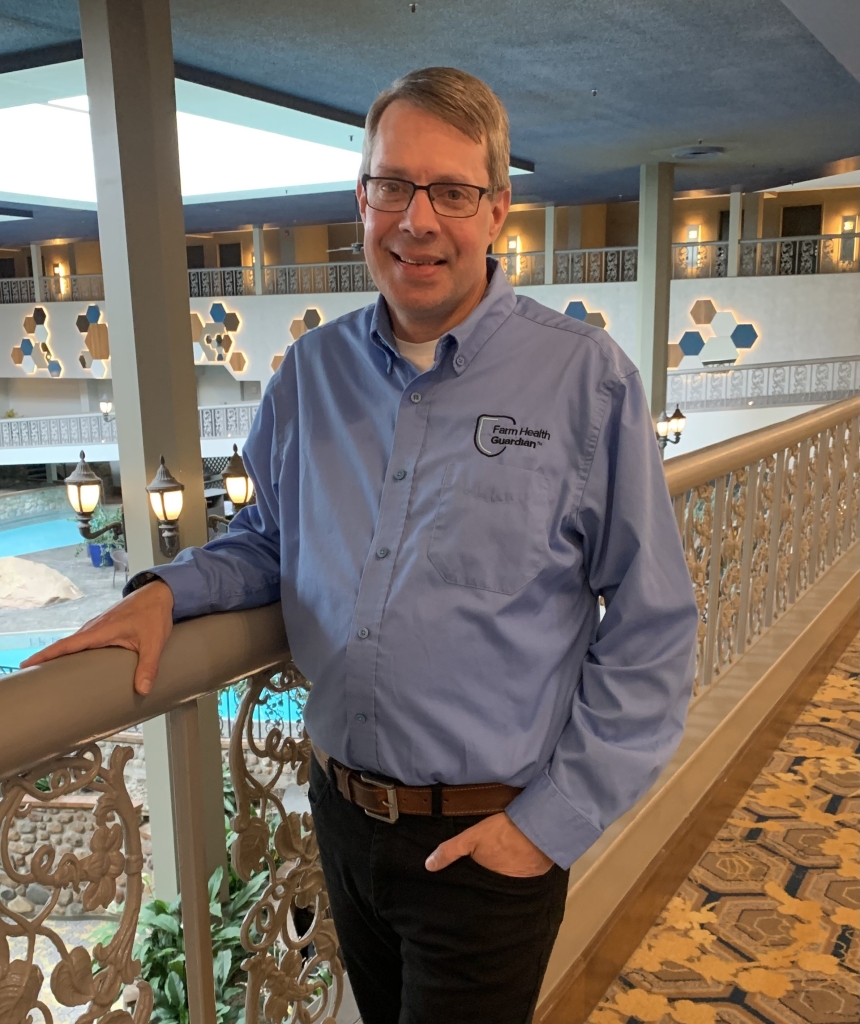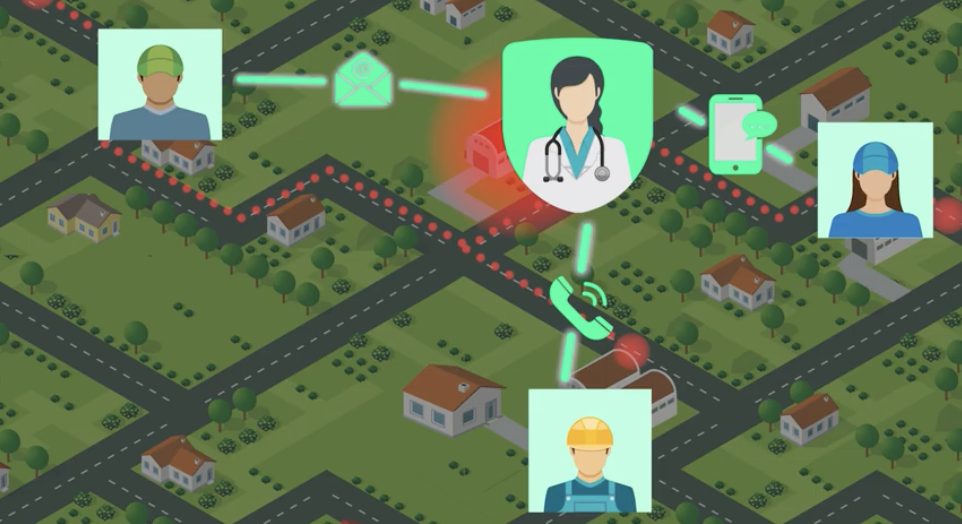
Serving the swine and poultry sector, trying to help farmers and food companies improve biosecurity.
An Ontario-based company has developed a digital system to do just that, Farm Health Guardian CEO Rob Hannam said in Saskatoon, where he spoke at the 2022 Saskatchewan Pork Industry Symposium on Nov. 15.
The main part of his company’s system, which was launched in 2020, is called Farm Health Protect. It is a biosecurity management system that links, among others, producers, haulers and veterinarians.
The system is currently being used on more than half the hog farms in Manitoba, and there is a pilot project underway in Saskatchewan.
Hannam said the system can link five or 10 or 20 or 50 farms in a group that shares trucks and shares workers. The technology applies to single farms as well. For example, log books can be digitalized, and records of who or what has come and gone from the farm can be stored for future reference. It can be found with the stroke of key on a computer.
“What we are able to do is help them manage and make sure workers and trucks are monitored when they move from farm to farm,” Hannam said.
“So, we are automatically and confidentially building up a database of information, so we know which trucks were at which farms today or yesterday, and if there is a disease outbreak, notifications can be sent instantly from the Farm Health Guardian system to the farms, the people, or the trucks that might be at risk of spreading a disease.”
To put it in real terms, he cited an example in Manitoba, where Farm Health Guardian’s technology is being used extensively.
“We had a vet technician look at the system and notice there was a truck moving to a farm, and it had not been through the wash. So, she was able to phone, in real time, the dispatcher and check. They pulled the truck over; they checked the records and indeed, there was a communication mishap and the driver thought it had been washed, but it really hadn’t been.
“That could have introduced a disease at a high-health farm, so that is a big saving. One outbreak of PED at a 3,000-sow operation (could) cost over a quarter million dollars in losses right off the bat.
“To save something like that; that’s huge.”
It is all about speed, Hannam emphasized.
“Often these notifications don’t come out for days, and by that time the disease is everywhere, so we are trying to change that, giving a tool to producers, organizations or government, so they can instantly communicate that message in real time.”
He said livestock trucks and trailers are identified as one of the main risks in biosecurity.

“Disease can move through the air, it can move from pig to pig, but when pigs move, they move on a truck.
“Monitoring those livestock trucks is quite important. If there is a disease outbreak, it is more than just the livestock truck; it’s the feed truck; it’s the maintenance truck; it’s who else was on the farm?
“So, we are trying to link that whole network together. But to do that, we need to respect the confidentially and privacy of those different haulers.
“We are only recording the movement off and on the farm property. That’s it. We are not recording the truck route. It that’s simple; on and off. All we need to know is if they were there or not during the incubation period of a suspect disease.”
Hannam said the pilot test in Saskatchewan has had its challenges. New software is now being tested.
He said roadblocks can be remote locations, spotty cell service, and not every barn having WIFI.
“So, by default farmers know that not every one of these fancy digital technologies work on my farm. We want to improve that; we want find out which ones work and which ones don’t. We set out to test three different technologies.”
With much-appreciated help from Sask Pork, he said 26 farms volunteered to be part of the pilot.
“What we did was place different devices in 10 different trucks that go to those farms on a regular basis to monitor how these devices work on these 26 farms.
“Well guess what? Some did and some didn’t work. We are part way through and what we have done is shelf the stuff that didn’t work; we are going to try some new devices — we just got them here today and we will be deploying them at those farms to keep the trial going, and test the technology again to find something that is going to work for sure here in Saskatchewan.
“In a few months, we will know the two or three things that worked reliably for Saskatchewan.”
He said a lot of people don’t manage their biosecurity.
“What we are providing here are digital tools and dashboards and reports, so you know for sure whether the trailer washed or not. Did it get baked to the right temperature or not. There are all kinds of sensors and things we can deploy.
“We are really in stage one of digital security, but the future is bright for being able to simplify things. Nobody has extra time for a new job. “We are going to have sensors do the work to record the information we need. We are going to turn that sensor data into information and then the farmers and vets and managers can use that information to make better decisions more easily.”
And more quickly.
If you are interested in being part of the pilot project in Saskatchewan or have questions about the system, visit
farmhealthguardian.com or email info@farmhealthguardian.com •
— By Cam Hutchinson





